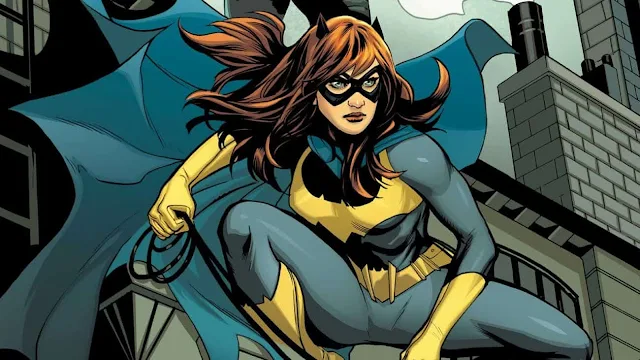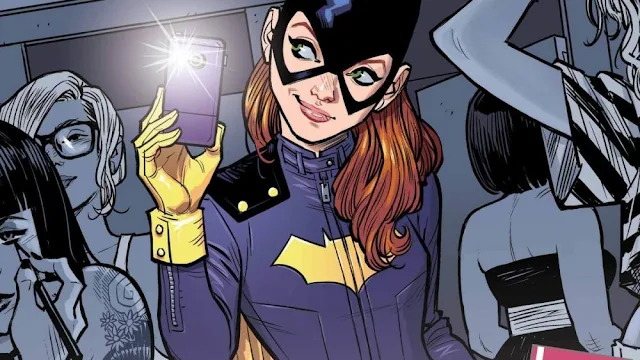Who is Batgirl / Oracle?
- First Appearance: AS BATGIRL: Detective Comics #359 (cover date: January 1967) AS ORACLE: Suicide Squad #23 (cover date: January 1989)
- Creators: BATGIRL: Gardner Fox and Carmine Infantino ORACLE: John Ostrander, Kim Yale, and Luke McDonnell
- Publisher: DC Comics
- Powers: Expert acrobatics and hand-to-hand combat, gifted intellect, computer expert
- Weapons: Various gadgets Base of Operations: Gotham City
- Key Allies: Batman, Robin/Nightwing, Black Canary, Commis sioner Gordon
- Key Enemies: Joker, Mirror
- Team Affiliations: Birds of Prey
- Secret Identity: Barbara Gordon (though others have used the name “Batgirl”)
- Nicknames: N/A
Batgirl Profile
The first character to don the mantle of Batgirl (or, in this case, Bat-Girl) was Betty Kane, niece and sidekick to Kathy Kane’s Batwoman. Created by Bill Fin ger and Sheldon Moldoff, the Betty Kane Bat-Girl was designed primarily to be a love interest for Robin, the Boy Wonder, as an attempt to allay suspicions that Robin and Batman were involved in a homosexual relationship (Finger and Moldoff, Batman #139, April 1961).
The character was discontinued in 1964 when DC Comics Editor Julius Schwartz took over the Batman titles and felt that the “Batman family” concept wasn’t working
The iconic Batgirl, Barbara Gordon, came about in large part due to the popu larity of the Batman television series (1966–1968) on ABC-TV. When producer William Dozier approached Schwartz for a female character who could act as a partner to the Dynamic Duo, Gardner Fox and Carmine Infantino created the character that most people think of as Batgirl. The daughter of Gotham City police commissioner James Gordon, Barbara had just completed her PhD (presumably in library studies, though it is never fully defined), and has returned to Gotham to work in the public library.
On her way to a policeman’s costume ball dressed in a feminized version of Batman’s iconic costume (as a nod to her father’s support of the hero), Barbara stumbles across the villain Killer Moth and his henchmen as they attempt to kidnap millionaire Bruce Wayne (who, of course, she does not know is Batman). After using her own ballet and self-defense skills to rescue Wayne, Barbara decides to continue as a masked crime fighter (Fox and Infantino, Detective Comics #359, January 1967).
Though at first seemingly supportive of Batgirl’s assistance, Batman (and even the young Robin) frequently suggest that she should leave crime fighting to the men. Batgirl continues both in adventures with Batman and Robin and her own solo adventures in the pages of Detective Comics—and featured later in Batman Family—through the 1970s.
A fascinating aspect of the first decade of Batgirl adventures is that, despite Batman being the “World’s Greatest Detective,” neither he nor Robin ever discover her identity (despite knowing Barbara as well). In fact, the only person who does figure out her dual identity is her father, Police Commis sioner James Gordon, a subtle but touching nod to a father’s support of his “New Woman” daughter (Frank Robbins and Don Heck, Detective Comics #422, April 1972).
In these 1970s adventures, Barbara Gordon becomes a U.S. congress woman, again an iconic representation of the times
Throughout the 1980s, Batgirl was rarely seen in the pages of the Batman titles. In 1988, Barbara Kesel and Barry Kitson tell “The Last Batgirl Story,” at the end of which Batgirl informs Batman (who, inexplicably, is now aware of her alterego) that she is retiring from crime fighting (Batgirl Special #1, May 1988).
Two months later, Alan Moore and Brian Bolland produced the classic graphic novel Batman: the Killing Joke. Designed as an origin story for the mysterious supervil lain the Joker, its crux was his plot to prove that anyone could be pushed to insan ity with just “one bad day.” In it, the Joker shoots and paralyzes Barbara Gordon, kidnaps her father, and—having stripped the commissioner naked and forced him into an abandoned fun house ride—forces him to observe photographs of his wounded, bleeding daughter (Batman: The Killing Joke, July 1988). The story laid the groundwork for the next 23 years of Barbara Gordon adventures.
The following year, Barbara Gordon emerges with a new alter ego, “Oracle,” a brilliant computer hacker (long before even the concept of the Internet was popularly known) who assists the drafted-criminal supergroup the Suicide Squad (Ostrander, Yale, and McDonnell, Suicide Squad #23, January 1989).
Oracle would go on to use her computer abilities to assist the Justice League as well, but her primary ally would continue to be Batman. In 1996, writer Chuck Dixon teamed Oracle with Black Canary in Black Canary/Oracle: Birds of Prey. This would lead to an ongoing series (Dixon and Greg Land, Birds of Prey #1, January 1999). Oracle would become a central character in the 1999 story line “No Man’s Land,” where Gotham City—hav ing been devastated by an earthquake—is cut off from the rest of the country, and Batman is mysteriously absent (trapped by the earthquake in the Batcave).
See also: Superman Rogues Gallery
It was during the “No Man’s Land” story that a new Batgirl emerged: Helena Bertinelli, previously known as “the Huntress” (Greg Rucka and Mike Deodato Jr., Batman: Legends of the Dark Knight #120, August 1999). In that same issue, Bertinelli passes the mantle of Batgirl to Cassandra Cain, who will go on to fea ture in the first monthly Batgirl comic book in 2000. In 2011, as part of the “New 52” reboot of the DC Comics Universe, writer Gail Simone brought Barbara Gor don back to her Batgirl persona, retconning her story to reveal that, after only a few years of paralysis, Barbara underwent experimental surgery to regain use of her legs (Simone and Adrian Syaf, Batgirl vol. 4, #1, November 2011). The deci sion was a controversial one, as the Oracle character had been highly regarded for decades for presenting a strong hero with a physical disability.
Batgirl has been very present in Batman adventures outside of comics, beginning with her debut in the Batman live-action series’ third season (1967–1968).
Portrayed by Yvonne Craig, Barbara Gordon/Batgirl was the first female character on televi sion to be presented as a strong hero equal to her male counterparts. As in her comics incarnation at the time, neither Batman nor Robin (or even her father) ever discov ered her true identity.
The Barbara/Batgirl character also appeared in every animated incarnation of Batman from the late 1960s to the early 2000s, most notably in the renowned Batman: The Animated Series of the 1990s. In 1999, under the creative team of Paul Dini and Bruce Timm, Barbara Gordon returned as a much older woman in the futuristic series Batman Beyond, where she served as the new Police Commissioner Gordon, aiding the new “Batman” and the retired Bruce Wayne in their continued war on crime.
Batgirl/Barbara played a more prominent role in the 2016 animated film Batman: The Killing Joke than she did in the original graphic novel on which the film was based. In the comic, her only involvement in the story was when Barbara, retired as Batgirl, is shot and paralyzed by the Joker. In the film, this story is preceded by Batgirl’s last case, involving an up-and-coming crime boss who becomes romantically obsessed with her, leading to her decision to retire. The film was controversial for its R rating and a love scene between Batgirl and Batman.
The Barbara Gordon version of Batgirl—the only one widely known in the zeitgeist—has been a subject of considerable attention from academics. From her early days representing the Women’s Lib Movement to her run as a symbol for the disabled, she has remained one of DC Comics’ most popular characters.
She has been dramatically de-aged over the years: in comics, she has gone from her begin nings as a woman in her late twenties to a college student a decade younger, while in animated form, she has gone from her midtwenties in the 1970s to being a high school student in 2005’s The Batman (except in one episode set in the future, where she is the wheelchair-bound Oracle) and 2015’s DC Super Hero Girls. She continues to be a popular role model for superhero fans everywhere.
See also: Batman: Comics, Batman: Other Media, Batwoman, Black Canary, Joker, Nigh twing/Robin I Suicide Squad; Thematic Essays: The Nonconformist Hero and the Silver Age: The 1960s, From Relevance to Acceptance: The Bronze and Copper Ages: The 1970s and 1980s—The Superhero in the Post–Cold War Era: The 1990s, The Superhero in the Post–9/11 World.
Next > Who is Joker?
Tag: Who is Batgirl in Marvel? Is Batgirl Batman's daughter? Who is Batgirl to Batwoman? Who is the main Batgirl?Batgirl Biography originstory,power and ability, batgirl characteristics batgirl powers and abilities batgirl skills gotham knights batgirl weakness how strong is batgirl batman character profile




